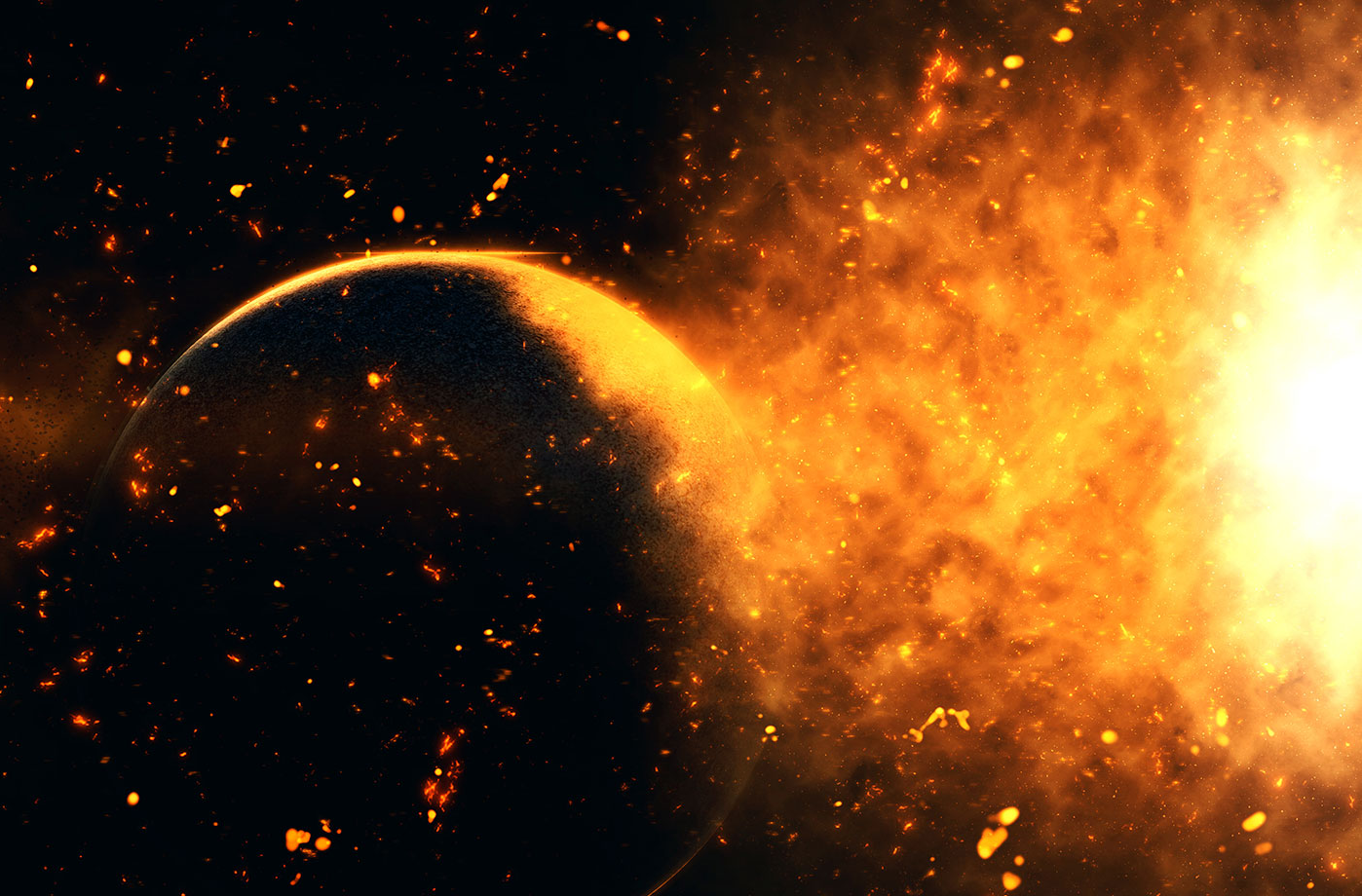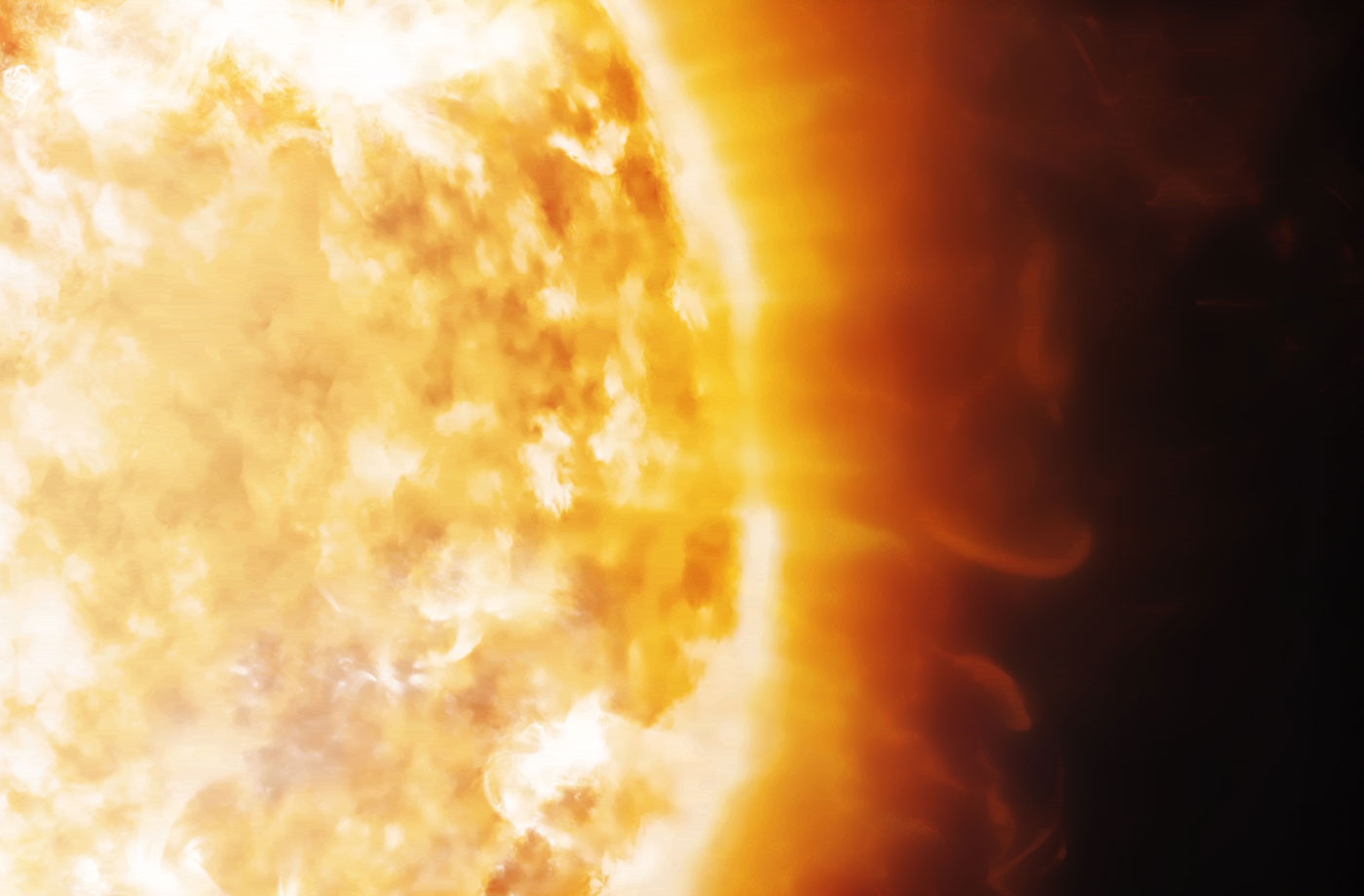Vladimir Pavlović
The phenomenon of "Solar Flares" can have a global impact on technological systems and telecommunications, as well as the day-to-day operations of organizations...


Vladimir Pavlović
Business Analyst
The development of technologies and the evolution of the human species throughout history have generally been associated with progress and better adaptation of the living world on planet Earth, primarily driven by the most significant initiators of all changes - humans. For centuries, we have gone through several phases of industrialization and transition, from traditional to modern times, often not making an effort to adapt to nature but rather to adapt nature to us, which has cost us fatally in the past.
The "Solar Flares" phenomenon occurs when the 11-year solar cycle abruptly ends and restarts, with greater intensity, creating large amplitudes caused by solar activity. This directly produces geomagnetic storms that affect Earth, leading to eclipses, damage to power grids, disruptions and interruptions in radio communication, and significant hindrances to the functioning of telecommunication systems.
Additionally, thanks to high-energy particles reaching Earth's magnetosphere, spectacular and unique phenomena called "aurora borealis" form in the sky above the planet, rarely visible except from the extreme Earth poles.
Of course, not every solar flare is of the same intensity and equally harmful; explosions and rays are classified into five categories: A, B, C, M, and X - with X being the designation for the strongest. Each category is ten times stronger than the previous one.
X-class explosions would be catastrophic for all living organisms on planet Earth. However, thanks to Earth's magnetic field and ionosphere, which stops the movement of particles toward the Earth's crust, life on Earth is not in direct danger from the effects of the "Solar Flares" phenomenon and the radioactive radiation of solar rays.
Nevertheless, as curiosity about exploring the universe and extraterrestrial life has increased over the decades, with attempts to approach the Sun through missions initiated by NASA, human exposure to solar radiation, specifically X-rays from "Solar Flares," has become more and more dangerous. Astronauts, whose satellites for observing solar activities are as important as the integrity of the spacecraft they use to orbit the Sun, are mainly concerned.
However, the unpredictability of nature still renders humans powerless and small, even with centuries of research and adaptation. The phenomenon of "Solar Flares," studied and observed for more than 150 years, remains a significant unknown for scientists. This is evident because it was believed that large solar storms occurred only during periods of higher solar activity. Still, a recent powerful solar eruption of the X-type category surprised many, occurring during a very calm solar cycle.
The first X-rays from that eruption reached Earth's atmosphere just 17 hours after the explosion, which was insufficient time for astronauts at high altitudes to descend back into the safety layer of the planet. The radiation that would have hit them at those altitudes would have been fatal to their lives. In addition to humans, space is home to many artificial satellites, some essential for everyday functioning, especially for digital communication.
In 1859, the most potent recorded "Solar Flare" caused massive problems in communication for the then most advanced technology - the telegraph. Solar rays emitted a frequency onto wires conducting communication, causing fires that interrupted communication throughout Europe and North America.
The consequences were felt and resolved months later, and some analyses of that event even estimated monetary damages of around 2 trillion U.S. dollars. Scientists studying this phenomenon are nearly unanimous in the opinion that such a solar storm, correlated with the direction of solar wind toward our planet today, would cause much more significant consequences for technologies and telecommunication systems, completely halting many operations.
Some go so far as to believe that the impact on the business of IT and telecommunication organizations would be more significant than during the COVID-19 pandemic. Data security would be vulnerable during system disruptions, making valuable data an easy target for cyber attacks.

So, if you're wondering if there is prevention and protection against the phenomenon of "Solar Flares," the answer is both yes and no.
NASA has launched a satellite that constantly records activities on the surface of the Sun and promptly reports to scientists who are part of the Solar Dynamics Observatory. One of the significant benefits of timely reporting of solar activities is the ability to inform airline companies and towers to suspend flights. Why airplanes?
One of the greatest fears of British aviation regulators is the impact of "Solar Flares" on the interruption of communication between pilots and air traffic control. This is still a hypothetical scenario that would not be an isolated case but a problem for dozens of pilots in the air at that moment, somewhere above the northern or southern hemisphere of the Earth.
The concern of these aviation regulators goes to such an extent that the question is not whether this scenario will come true but when. One of this century's most significant eruptions on the solar surface occurred in late 2023, precisely on December 14. The explosion that occurred then was quantitatively equal to that of a billion hydrogen or thermonuclear bombs. However, this time, Earth felt no severe consequences because the solar wind did not act toward Earth. Still, the sight in the sky was a paradise for lovers of atmospheric phenomena who could enjoy it even in cities like Hong Kong or Miami, where it is almost impossible to see such events, indicating the destructiveness of this solar eruption.
However, such eruptions can be fatal to satellites, astronauts, and spacecraft at altitudes that Earth's magnetosphere cannot protect. Although there are still no officially proven connections, many scientists believe that the increasing tectonic activity of Earth's plates has roots far beyond Earth's atmosphere, precisely in eruptions occurring on the solar surface.
Considering that the Moon directly influences the movement of water on Earth, it is only a matter of time before scientists discover a direct connection between solar activity and the movement of tectonic plates on Earth. The phenomenon of "Solar Flares" is undoubtedly something that remains a great unknown even after decades of observation and research. Nature has often taught us that it is not a game of statistics and probabilities and can surprise us when we least expect it.
For now, this phenomenon does not endanger the lives of living beings on Earth. Still, the normal functioning of large companies, organizations, and even government institutions in business could be challenging. We know what the COVID-19 pandemic brought us and took away, and nature can be even more ruthless. It certainly will not warn us twice because reality is unlike the movie "Don't Look Up," where Leonardo DiCaprio will save us all.